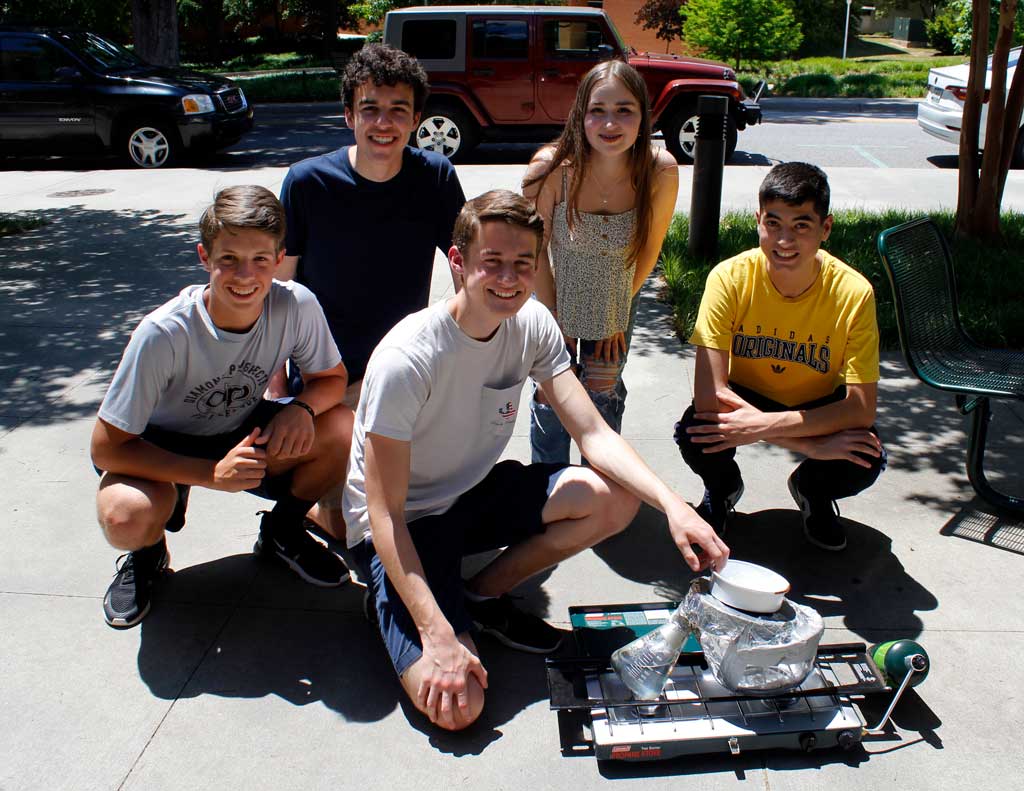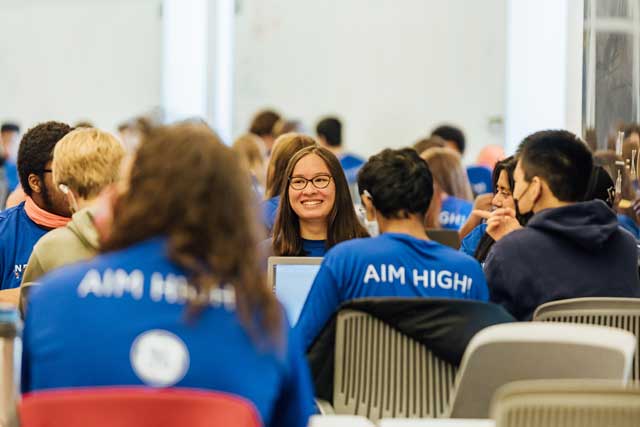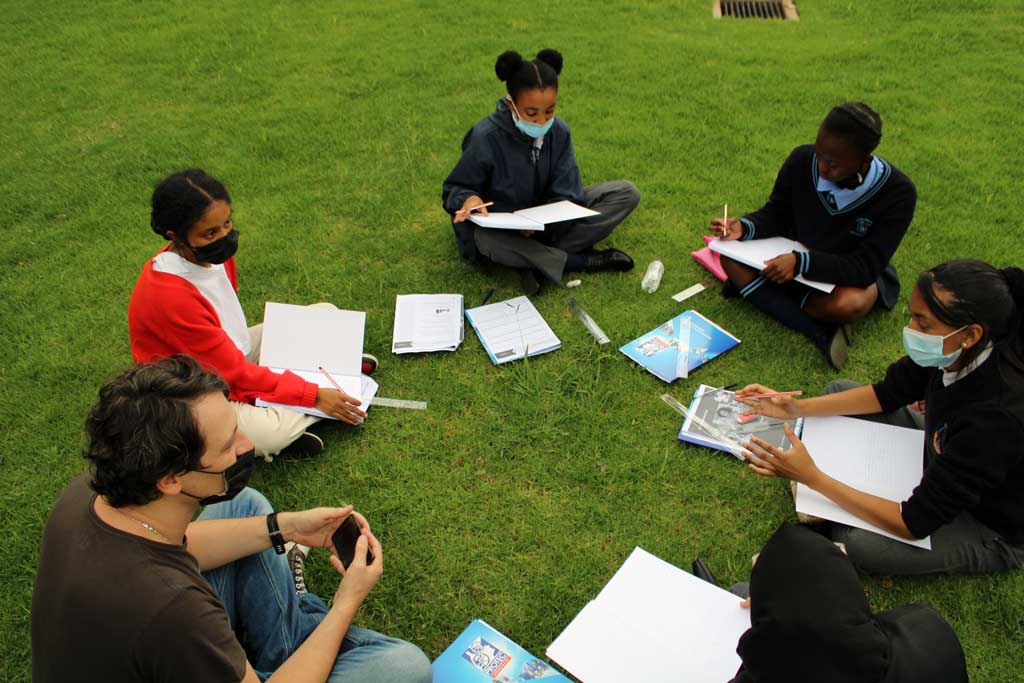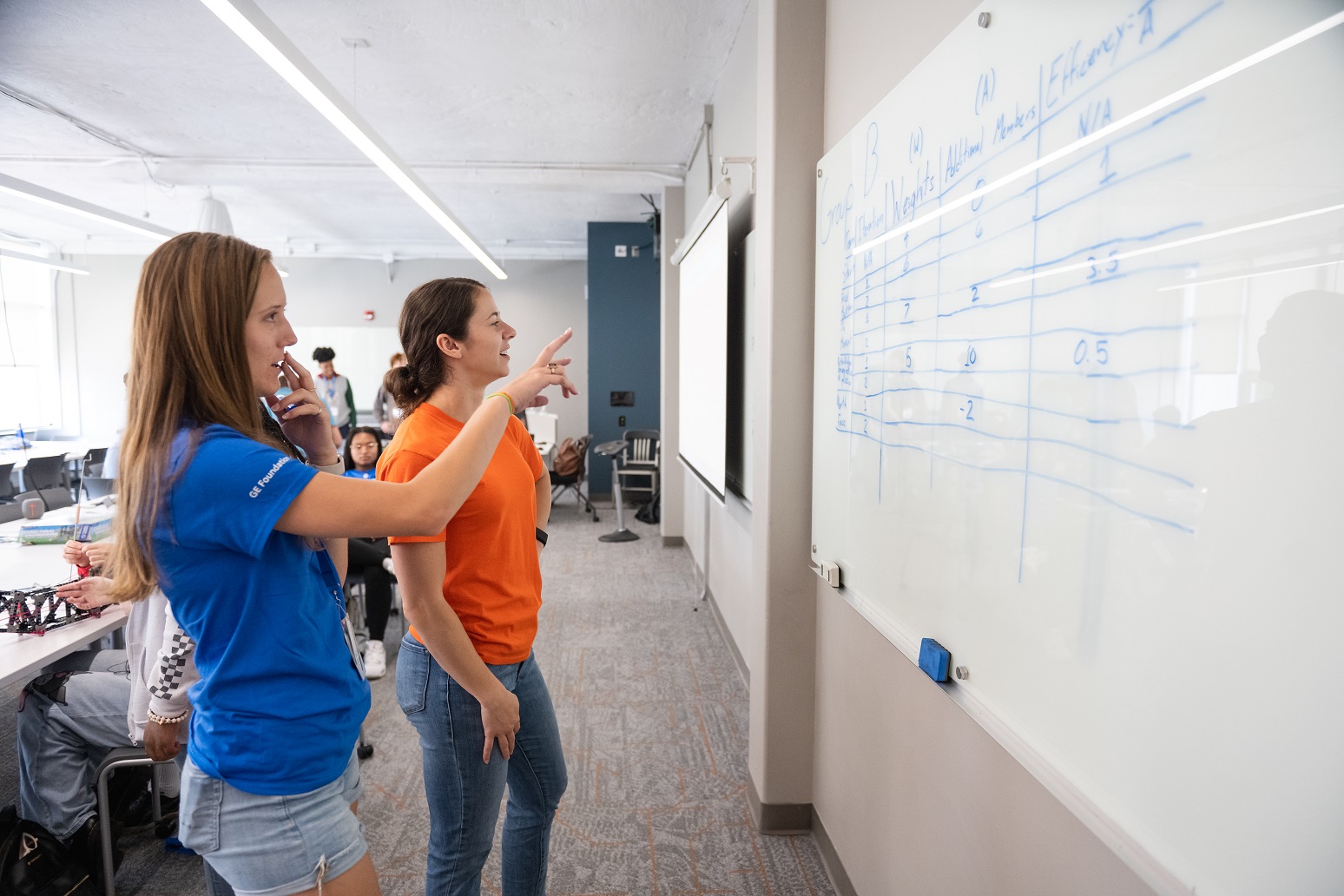

Sound is all around us and so much a part of most people’s daily lives that we often don’t even realize all the different sounds in our environment. In fact, we are so used to sounds that it can come as a bit of a shock to be in complete silence.
Sound is a form of energy transfer and results whenever an object vibrates. These vibrations are transferred to the particles of a medium like the air which vibrate back and forth creating areas of high pressure (compressions) and low pressure (rarefactions). This creates a longitudinal wave that travels to your ears, where you experience it as sound that you hear.
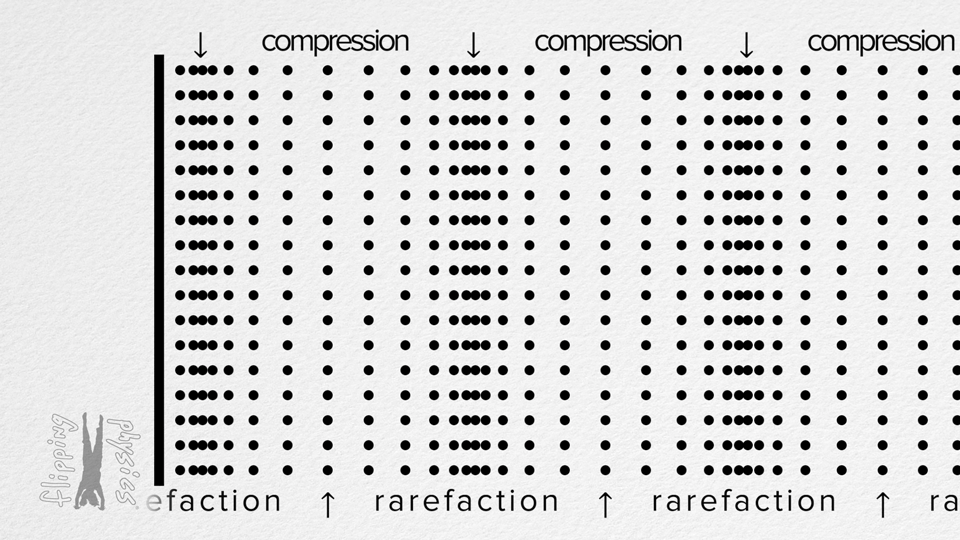
Longitudinal wave by Flipping Physics is used under fair use
Not all sounds sound the same. Some are loud, others soft. Some are high pitched, others low pitched. Some we enjoy as music, while others seem to us like noise.
To help us understand how we perceive different sound waves as different sounds, it is useful to model the longitudinal sound wave as the more familiar transverse wave. In a transverse wave, the particles move at right angles to the direction of travel of the wave.
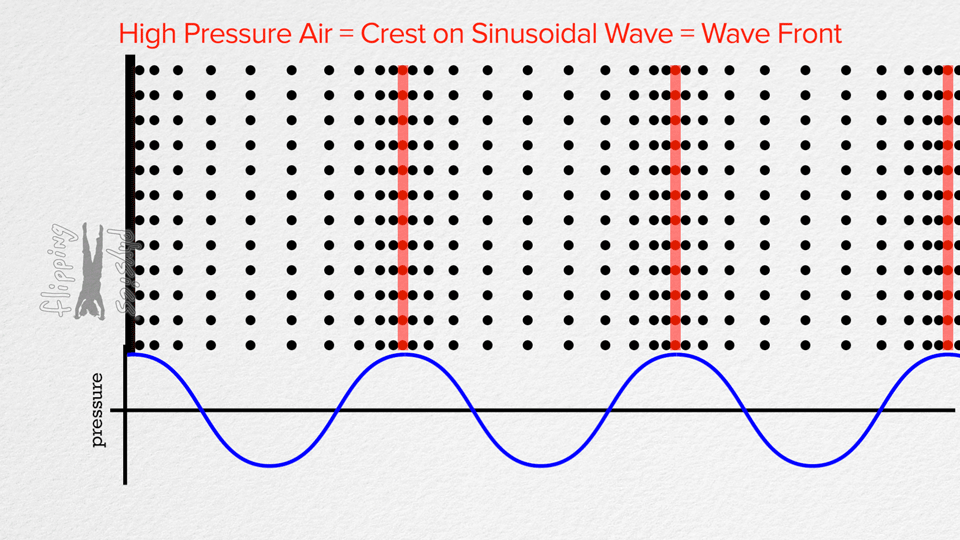
Each compression of the longitudinal wave can be thought of as a peak and each rarefaction a trough.
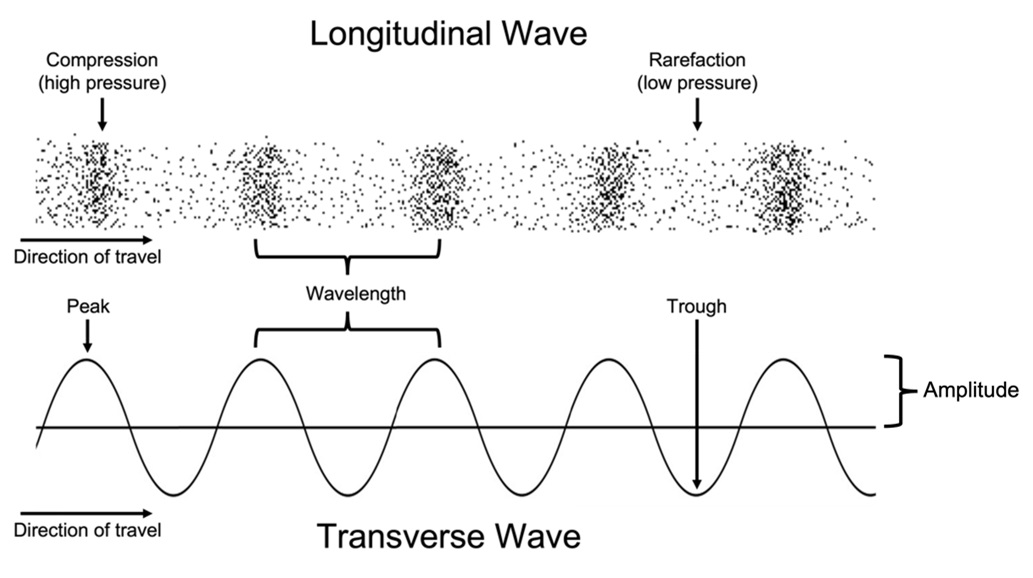
The more compressed the compressions, the greater the air pressure in these regions. We can model this as higher peaks (and lower troughs). We measure the height of the peaks as the amplitude of the wave. The greater the amplitude of a sound wave, the louder we hear it.
We measure the loudness of sound using the decibel (dB) scale. We define 0 dB as the limit of human hearing. Every 10 dB represents a sound that is 10 times louder.
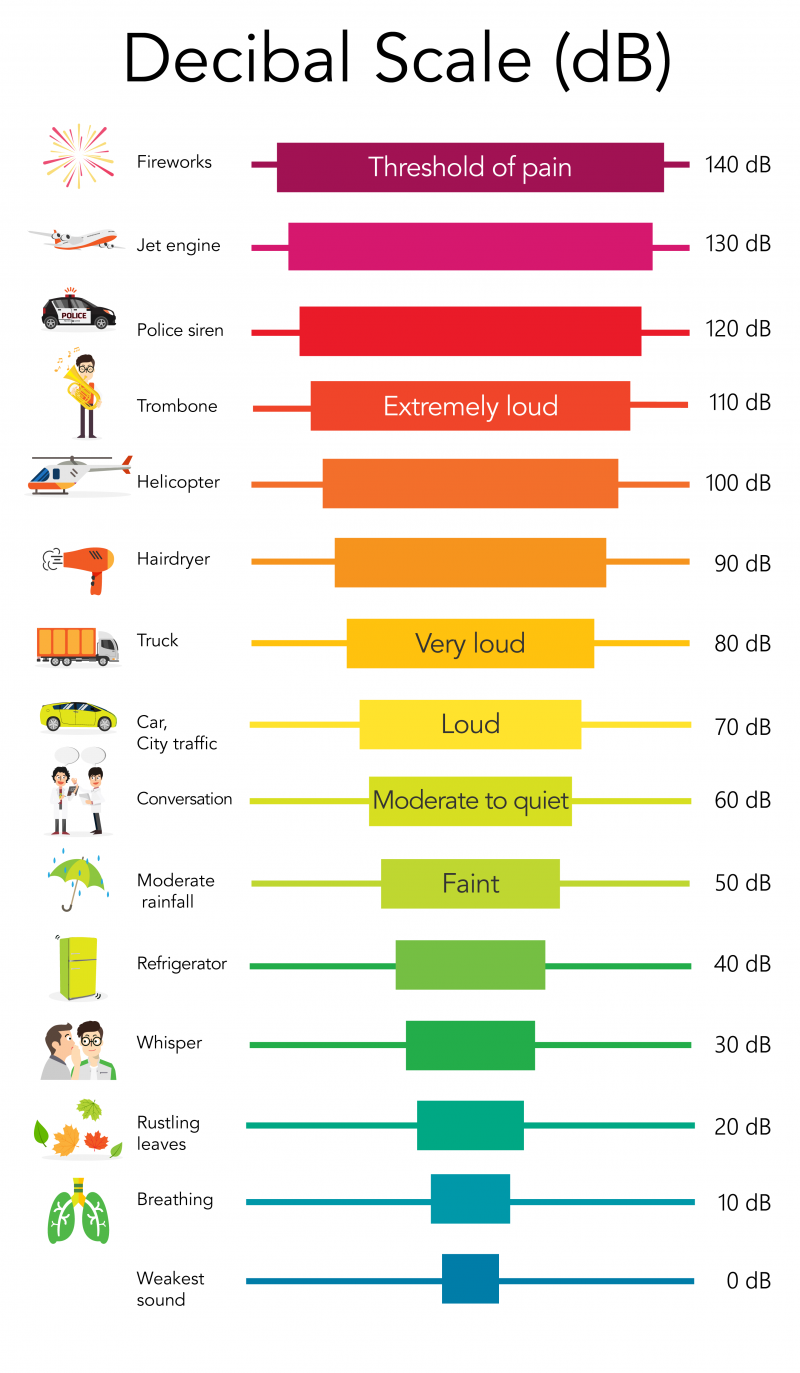
The decibel scale by Let’s Talk Science is used under fair use.
Why do you think that a wave with a greater amplitude is heard as a louder sound?

The distance between each successive compression or peak is called the wavelength. The shorter the wavelength, the more complete waves pass a given point each second. We measure how many waves pass per second as the frequency. One hertz (1 Hz) is one full wave per second.
Sound waves with a high frequency are heard as high pitched. Sounds with a low frequency are heard as low pitched. Humans can hear sounds with a frequency of between 20 Hz and 20 000 Hz.

But sound is not just useful for perceiving, interacting with, and making sense of the world. Engineers have found truly ingenious ways to put sound to some other uses, as we will see.
If you have a mobile device, download one of the free decibel meter apps like ‘Decibel Meter’ for iOS or ‘Sound Meter’ for Android.
Take sound level readings around your house. Which are the loudest areas? Which are the quietest?
Who is the loudest talker in your family?
You can also download a free tone generator app like ‘MultiTone’ for iOS and Android. With this app, you will be able to generate pure sounds with specific amplitudes and frequencies. Play around with the settings to see their effect on the sound that you hear.
Bats can hear sounds with frequencies between 9 000 Hz and 200 000 Hz. They use these high-pitched sounds to image their environment through a process called echolocation.

